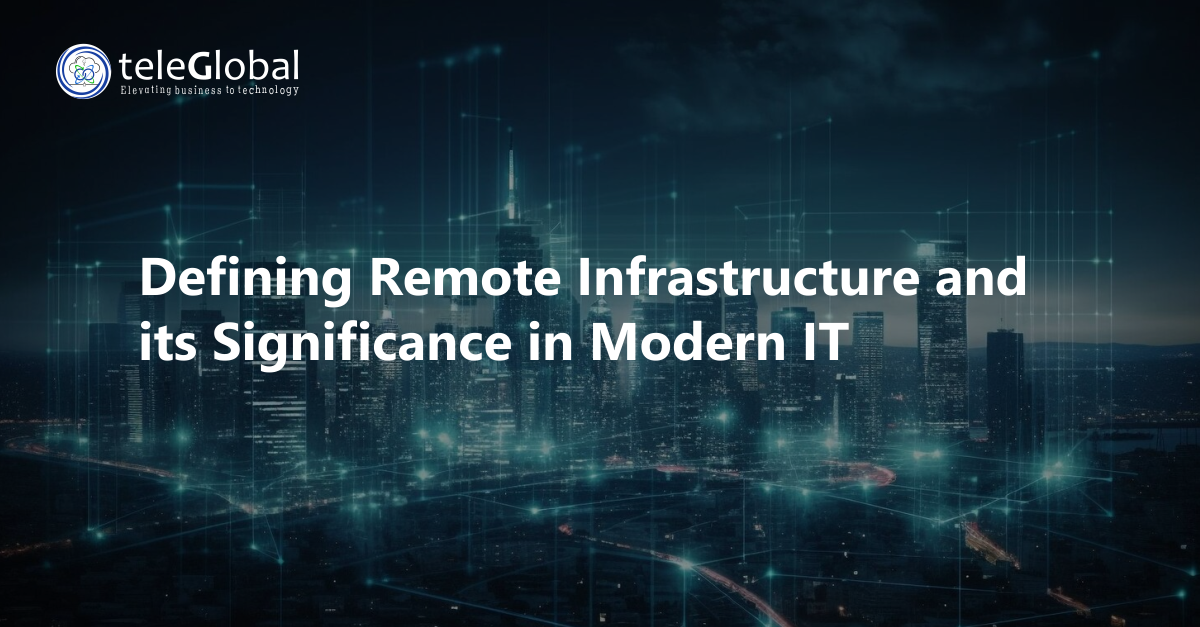
| Author: Abhinita Singh | Published: 11-Feb-2023/em> |
In the fast-paced realm of modern Information Technology (IT), the concept of remote infrastructure has become increasingly integral, shaping the way organizations design, implement, and manage their IT systems. Remote infrastructure refers to the network of servers, hardware, software, and other components that form the backbone of an organization’s IT framework but are situated in geographically separate locations. This departure from traditional on-premise infrastructure has profound implications for businesses, offering a range of benefits that contribute to enhanced flexibility, scalability, and overall efficiency.
One of the defining features of remote infrastructure is its capacity to facilitate remote access and management. With the advent of cloud computing, organizations can now house their infrastructure in data centers located anywhere globally while providing seamless and secure access to users irrespective of their physical location. This decentralization of infrastructure allows for greater flexibility in workforce management, enabling employees to work from diverse locations and ensuring business continuity even in the face of unforeseen disruptions.
Scalability is another significant advantage offered by remote infrastructure. As businesses experience growth or fluctuations in demand, the ability to scale resources up or down becomes crucial. Remote infrastructure, particularly when hosted on cloud platforms, allows organizations to dynamically adjust their computing resources, ensuring optimal performance without the need for large upfront investments in physical hardware. This scalability empowers businesses to adapt quickly to changing circumstances, whether it be responding to increased workloads or optimizing costs during periods of reduced demand.
The cost-effectiveness of remote infrastructure is a compelling factor for organizations seeking to maximize their IT investments. Traditional on-premise infrastructure often involves substantial upfront capital expenditures for hardware, maintenance, and space. In contrast, remote infrastructure models, such as Infrastructure as a Service (IaaS), operate on a pay-as-you-go basis. This means organizations only pay for the resources they consume, eliminating the need for significant upfront investments and providing a more predictable and scalable cost structure.
Security is a paramount consideration in the realm of IT, and remote infrastructure introduces new paradigms for safeguarding data and systems. While concerns about the security of cloud-based infrastructure persist, reputable cloud service providers implement robust security measures, including encryption, firewalls, and multi-factor authentication. The shift to remote infrastructure also allows organizations to centralize their security protocols, ensuring consistent and updated protection across all components of the IT infrastructure.
The significance of remote infrastructure extends beyond its technical advantages; it has transformative implications for the way businesses approach IT strategy and operations. The remote model aligns with the broader trends of digital transformation, enabling organizations to embrace agility and innovation. With remote infrastructure, businesses can swiftly adopt emerging technologies, experiment with new applications, and pivot their IT strategies in response to evolving market dynamics. This agility is particularly crucial in industries where rapid adaptation to technological advancements can confer a competitive edge.
Collaboration and communication tools have flourished in the era of remote infrastructure, further enhancing the interconnectedness of global teams. Cloud-based collaboration platforms facilitate real-time communication, document sharing, and project management, fostering a collaborative work environment irrespective of geographical boundaries. This not only boosts productivity but also encourages diverse perspectives and expertise to contribute to projects, ultimately driving innovation within the organization.
However, the adoption of remote infrastructure is not without its challenges. Organizations need to address issues related to data governance, compliance, and the potential complexities of migrating existing systems to the cloud. Additionally, considerations regarding the reliability and performance of internet connectivity become more pronounced as dependence on remote infrastructure increases.
In conclusion, Remote Infrastructure Management stands as a defining paradigm in modern IT, reshaping the way organizations conceptualize and implement their technological frameworks. The move towards decentralized, scalable, and cost-effective models is not just a response to contemporary challenges but a strategic shift that positions businesses for future success. As the landscape of IT continues to evolve, the significance of remote infrastructure lies not only in its technical capabilities but in its transformative potential to drive innovation, enhance collaboration, and propel organizations into a dynamic and adaptive digital future.
